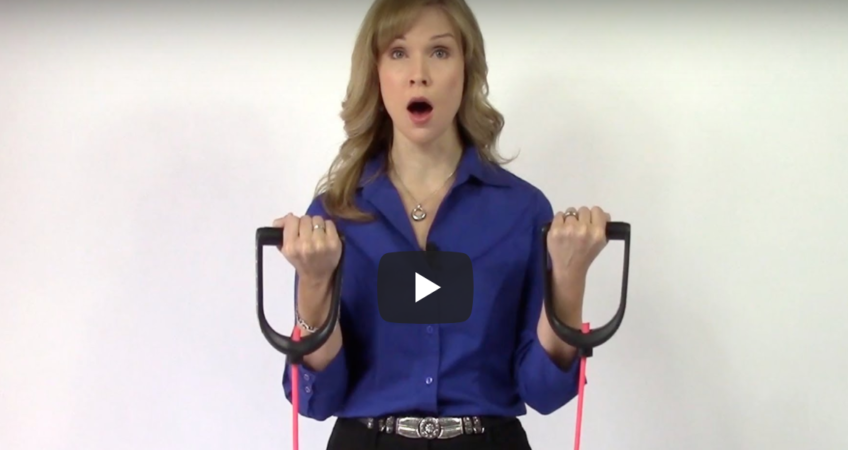
Part 4: Singers! This Band Will Support You!
In part four of my five part series: sharing creative ways to integrate breath into your singing, I show you how to use an exercise band to connect with your core and create a supported sound.
Why this type of physical movement for singers?
Throughout this series, I have been using physical actions to take the idea of breath management out of your head and put it into and on your body. When you physically to do the action, you have the opportunity to put your academic intellect on hold and let your body knowledge do the work.
These exercises, used in small dosages, round out a singer’s understanding of how deeply breath is connected to sound, the precise muscle coordination involved, and the gentle balance between singing athleticism and allowing breath to “naturally” occur.
Wait, isn’t breathing supposed to be simple and natural?
We all breathe… but for some of us allowing for a “natural” breath may be a place of ambiguity. Perhaps you have unconsciously acquired some bad habits. These exercises are fashioned to bring awareness and clarity to how the body WANTS to breathe… low diaphragmatic breathing, efficient muscle use, and an active breath that gives freedom to the vocal apparatus and enhances singing stamina.
This exercise is a variation of an exercise passed on to me by master teacher, Madeline Abel-Kerns founder of the Body.Breath.Sing. Method™.
Key Points to Remember
1. The exhale and the physical exercise begin at the same moment
2. The exhale, sustained sound, and physical exercise also begin at the same moment
3. Allow for lots of space in the upper torso, spine, neck, and throat
4. Relax your jaw and tongue
5. Inhale as silently as possible
Let’s Begin
1. Exhale fully (watch video for demonstration)
2. Inhale
On the natural inhale, allow your lower abdominals to fill. Chest and shoulder are relaxed, open and free. No holding your rib cage, shoulder, or neck.
3. Add physical motion
On the exhale, begin the physical motion of pulling the band up to a “bicep curl.” Knees slightly bent, feet shoulder width apart, and strong legs.
Do the relaxed bicep curl motion very slowly as you “silently” exhale.
4. Allow for deep expansion
As you move with the breath, bring attention to how the lower abdominals engage. The abdominals are not just located in your front stomach area…or on the sides of your torso…they reach all the way down to your pelvic floor (refer to photo). The pelvic floor is how low and internal the breath may be engaged. Allow for this deep expansion.
Continue the motion until you have reached full exhale.

5. Inhale
On the inhale, let your arms descend to a relaxed starting position. Take your time to allow for full inhale, your lower belly dropping or falling as breath capacity increases. Upper torso is relaxed and buoyant.
6. Add sustained pitch
Now exhale with a pitch. As you start the bicep curl, feel your way through the motion, always providing for space in the spine, neck, and throat. Allow for deep expansion in the pelvic floor, releasing any tension in the upper torso.
Feel how breath, sound, and motion move as one. Feel the muscle coordination that is gently working to create your sound. Feel the openness of the sound as it exits your body. Feel your entire body singing.
7. Add a phrase of music
Try this exercise with a phrase of music. Then feel free to add several phrases of music, taking adequate time between each phrase to inhale slowly and with physical freedom.
Your Turn
Don’t take my word for it. Try this exercise for yourself. Play! Have fun!
Let me know how it goes…. and always feel free to ask me any questions.
Happy singing! Until next week…. Rejoice In Your Voice™!
xoxoxo
Tricia
Click video below to watch the exercise demo.
